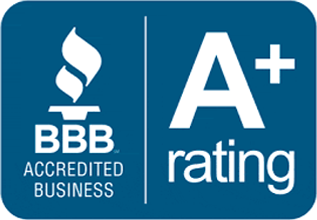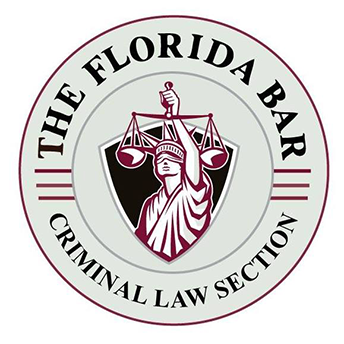Victims of the BTC-e Seizure for Forfeiture
One of the most complex issues for civil asset forfeiture attorneys is protecting victims after their cryptocurrency is seized for forfeiture by the Government. The BTC-e is an interesting case study that illustrates how complicated this process can become, especially with such a large amount of cryptocurrencies at stake.
The unique facts of the BTC-e seizure impacted innocent account holders worldwide. On June 30, 2025, in Case Number 1:25-cv-02085, Assistant United States Attorneys (AUSAs) filed a complaint for forfeiture regarding “all virtual currency held in the BTC-E operating wallets as of July 25, 2017, and other assets further described herein.” The complaint was filed in the United States District Court for the District of Columbia. By filing the civil asset forfeiture case and sending notices, Claimants are put on notice of the important deadlines that apply.
Victims who lost money in BTC-e accounts were able to file judicial claims through September 2, 2025, when the deadline for filing claims expired.
What Does the Forfeiture Complaint Allege?
The first claim of the forfeiture complaint alleges the seized property is subject to forfeiture under 18 U.S.C. § 981(a)(1)(A) because it was involved in transactions in violation of 18 U.S.C. § 1960 (operating an unlicensed money transmitting business) or is traceable to such property.
The second claim of the forfeiture complaint alleges the seized property is subject to forfeiture under 18 U.S.C. § 981(a)(1)(A) because it was involved in a transaction in violation of 18 U.S.C. § 1956(h) (money laundering conspiracy) or is traceable to such property.
The complaint in Case Number 1:25-cv-02085 was filed by lawyers with the Money Laundering & Asset Recovery Section of the Criminal Division of the United States Department of Justice (DOJ) and trial attorneys with the Computer Crime and Intellectual Property Section in Washington, DC.
What Cryptocurrency and Assets were Listed for Forfeiture in the BTC-e case?
The complaint lists various groups of assets that were seized in the BTC-e case or sought for forfeiture, including:
- (A) All virtual currency held in the BTC-e operating wallets as of July 25, 2017, including but not limited to:
- (i) Approximately 925.93922019 bitcoin seized between August 2, 2017, and August 17, 2017;
- (ii) Approximately 4036.91817168321 ether seized on August 5, 2017;
- (iii) Approximately 2249.25 litecoin seized between August 7, 2017 and August 11, 2017;
- (iv) Approximately 284553.52143074 namecoin seized on August 10, 2017;
- (v) Approximately 1946.609 novacoin seized on August 7, 2017;
- (vi) Approximately 279.05 peercoin seized on August 11, 2017;
- (vii) Approximately 33.03682558 dash seized between August 7, 2017 and August 11, 2017;
- (viii) Approximately 929.5 BTC transferred to 1FFs5hv6JBScJq63aFZvBaNsP6FwnhVgre on or about July 31, 2017;
- (ix) Approximately 485,705.4599 ETH held in 0x8eb3fa7907ad2Ef4c7E3BA4B1d2F2aAc6f4B5ae6 as of July 30, 2017.
- (B) Approximately USD $89,683,590.51, AUD $ 5,471,132.02, RUB 9,339,457.71, and GBP 35,459.32 in funds consolidated and previously held in the name of or for the benefit of Canton Business Corporation at FXOpen and/or XP Solutions Limited, account number X60FXPNXXF9776910001, and related trading accounts, including any interest earned thereon;
- (C) Approximately USD $72,574.48 and RUB 453,361.66 in funds consolidated and previously held in the name of Alexander Vinnik at FXOpen and/or XP Solutions Limited, account number XX20FXPNXXF3396510002, and related trading accounts, including any interest earned thereon;
- (D) Approximately USD $5,491,509.67 in funds consolidated and previously held in the name of or for the benefit of Canton Business Corporation and/or Stanislav Golovanov at FXOpen AU Pty Ltd., account number XX46FXPNXXG3750310001, and related trading accounts, including any interest earned thereon;
- (E) All funds on deposit in account numbers
- (i) CZ6903000000000273635458,
- (ii) CZ6703000000000273635300, and
- (iii) CZ7803000000000273636266, held in the name of NANO ABC LP at Československá obchodní banka.
- (F) All funds on deposit in account number CZ0080000000000001939292223 held in the name of NANO ABC LP at Česká spořitelna banka.
Background Information on BTC-e
BTC-e was an unlicensed cryptocurrency exchange that was shut down by U.S. law enforcement in 2017, based on allegations that the accounts were used by criminals to launder money from 2011 to 2017. Of course, not all account owners were guilty of wrongdoing. On BTC-e, users were allowed to buy, sell, and store bitcoin and other digital currencies anonymously.
The Government might allege that the victims who lost their assets were cybercriminals who transferred, laundered, and stored the proceeds of their illegal activities. The complaint alleges that BTC-e allowed users to set up and fund accounts anonymously, thereby attracting a significant clientele of criminals. The Government has alleged that BTC-e received criminal proceeds involving:
- computer intrusions
- hacking incidents
- ransomware events
- identity theft schemes
- corrupt public officials
- Darknet narcotics distribution rings
BTC-e held numerous cryptocurrency wallets and financial accounts opened in the name of shell and front companies worldwide, which were used to move funds on behalf of its clients without detection. From 2011 to 2017, BTC-e served over one million users worldwide, processing more than $9 billion worth of transactions.
Why was BTC-e Seized?
Money transmitters doing business in the United States have numerous obligations under U.S. laws designed to prevent money laundering by safeguarding the financial system. Outside the United States, other jurisdictions had similar laws. The Government alleged that BTC-e failed to comply with these laws, despite doing business in the United States by offering services to a U.S. client base and using U.S.-located servers.
The Government alleged BTC-e broke federal law by:
- not registering as a “money services business” with the United States Department of the Treasury’s Financial Crimes Enforcement Network (“FinCEN”);
- having no meaningful anti-money laundering and/or “Know-Your-Customer” (“KYC”) processes in place;
- knowingly helping criminal enterprises conceal criminal proceeds by making it more difficult for law enforcement to trace and attribute funds.
Problems for Claimants Who Lost Cryptocurrencies on BTC-e
The Government’s complaint for forfeiture, filed on June 30, 2025, in Case 1:25-cv-02085, outlines the theory why many Claimants will not be entitled to any refund at all. The complaint alleges:
- BTC-e was utilized by cybercriminals worldwide and was one of the principal entities used to launder and liquidate criminal proceeds;
- sizable amounts of BTC-e’s business were derived from criminal activity as determined by the analysis of data housed on BTC-e’s servers, the Bitcoin blockchain, communications, and financial account records;
- BTC-e processed transactions involving the proceeds of specified unlawful activity, including:
- “a. operation of an unlicensed money transmitting business, in violation of 18 U.S.C. § 1960;
- b. computer hacking and intrusions, in violation of 18 U.S.C. § 1030;
- c. identity theft, in violation of 18 U.S.C. § 1028;
- d. interstate transportation of stolen property, in violation of 18 U.S.C. § 2314;
- e. theft of government proceeds and extortion, in violation of 18 U.S.C. §§ 641 and 1951; and
- f. narcotics trafficking, in violation of 21 U.S.C. § 841.
The complaint alleges “BTC-e received and transferred cryptocurrency valued at at least $68.3 million from darknet marketplaces; at least $14.0 million from fraud shops; at least $10.3 million from ransomware perpetrators; at least $20.0 million from virtual currency mixers; and at least $8.25 million from the hack of Mt. Gox.”
Nevertheless, many BTC-e account holders were completely innocent of any wrongdoing and can trace their funds back to the time they were legally earned.
BTC-e Holdings at the Time of Seizure
When BTC-e was shut down in July 2017, it still controlled substantial cryptocurrency reserves on-chain. Experts have identified specific wallet addresses associated with BTC-e through blockchain analytics. First, an Ethereum wallet labeled “BTC-e” on Etherscan held a substantial balance of Ether leading up to the seizure. Second, the blockchain forensics firm Crystal Blockchain identified a Bitcoin treasury wallet belonging to BTC-e, which still contained tens of thousands of BTC after the seizure.
Although law enforcement coordinated seizures of BTC-e’s servers and infrastructure, it appears the exchange’s operators retained access to crypto wallets holding some user deposits. At the time of the takedown of BTC-e, experts had noted large on-chain movements as BTC-e administrators scrambled to preserve funds. See “Data Shows Millions Leaving Crypto Wallets Tied to Long-Troubled Exchange,” Anna Baydakova (Oct 30, 2018, 3:15 p.m.).
USAO OFFICIAL NOTIFICATION POSTED ON JULY 04, 2025
The United States Attorney’s Office (USAO) official notification was posted on the forfeiture.gov website beginning on July 4, 2025. For claimants who receive a personal notice, the personal notice likely has a shorter deadline that may apply and limit any late claim or petition.
For anyone who did not receive a personal notice, the published notice sets the deadline to file a claim at “60 days from the first day of publication (July 04, 2025) of this Notice.” For this reason, the deadline to file a judicial claim in the civil asset forfeiture case is September 2, 2025. The published notice of seizure provided:
IN THE UNITED STATES DISTRICT COURT FOR THE DISTRICT OF COLUMBIA
COURT CASE NUMBER: 25-CV-2085;
NOTICE OF FORFEITURE ACTION
Pursuant to 18 U.S.C. § 981, the United States filed a verified Complaint for Forfeiture against the following property:
All virtual currency held in the BTC-e operating wallets as of July 25, 2017, including but not limited to:
- (i) Approximately 925.93922019 bitcoin seized from BTC-e between August 2, 2017, and August 17, 2017;
- (ii) Approximately 4036.91817168321 ether seized from BTC-e on August 5, 2017;
- (iii) Approximately 2249.25 litecoin seized from BTC-e between August 7, 2017 and August 11, 2017;
- (iv) Approximately 284553.52143074 namecoin seized from BTC-e on August 10, 2017;
- (v) Approximately 1946.609 novacoin seized from BTC-e on August 7, 2017;
- (vi) Approximately 279.05 peercoin seized from BTC-e on August 11, 2017;
- (vii) Approximately 33.03682558 dash seized from BTC-e between August 7, 2017 and August 11, 2017;
- (viii) Approximately 929.5 BTC transferred to 1FFs5hv6JBScJq63aFZvBaNsP6FwnhVgre on or about July 31, 2017;
- (ix) Approximately 485,705.4599 ETH held in x8eb3fa7907ad2Ef4c7E3BA4B1d2F2aAc6f4B5ae6 as of July 30, 2017 (18-FBI-002785)
[[Other seized cryptocurrency includes:]
- Approximately USD $89,683,590.51, AUD $ 5,471,132.02, RUB 9,339,457.71, and GBP 35,459.32 in funds consolidated and previously held in the name of or for the benefit of Canton Business Corporation at FXOpen and/or XP Solutions Limited, account number X60FXPNXXF9776910001, and related trading accounts, including any interest earned thereon. (18-FBI-002786)
- Approximately USD $72,574.48 and RUB 453,361.66 in funds consolidated and previously held in the name of Alexander Vinnik at FXOpen and/or XP Solutions Limited, account number XX20FXPNXXF3396510002, and related trading accounts, including any interest earned thereon. (18-FBI-002787)
- Approximately USD $72,574.48 and RUB 453,361.66 in funds consolidated and previously held in the name of Alexander Vinnik at FXOpen and/or XP Solutions Limited, account number XX20FXPNXXF3396510002, and related trading accounts, including any interest earned thereon. (18-FBI-002789)
- Approximately USD $5,491.509.67 in funds consolidated and previously held in the name of or for the benefit of Canton Business Corporation and/or Stanislav Golovanov at FXOpen AU Pty Ltd., account number XX46FXPNXXG3750310001, and related trading accounts, including any interest earned thereon. USAO OFFICIAL NOTIFICATION POSTED ON JULY 07, 2025 (18-FBI-002790)
- All funds on deposit in account numbers (i) CZ6903000000000273635458 (ii) CZ6703000000000273635300, and (iii) CZ7803000000000273636266, held in the name of NANO ABC Ceskoslovenska obchodni banka. (18-FBI-002791)
- All funds on deposit in account number CZ0080000000000001939292223 held in the name of NANO ABC LP at Ceska sporitelna banka. (18-FBI-002792)
Any person claiming a legal interest in the Defendant Property must file a verified Claim with the court within 60 days from the first day of publication (July 04, 2025) of this Notice on this official government internet web site and an Answer to the complaint or motion under Rule 12 of the Federal Rules of Civil Procedure within 21 days thereafter.
18 U.S.C. § 983(h)(1) permits a court to impose a civil fine on anyone asserting an interest in property which the court determines was frivolous.
The verified Claim and Answer must be filed with the Clerk of the Court, 333 Constitution Avenue, NW, Room 1225, Washington, DC 20001, and copies of each served upon Trial Attorney Joshua Sohn, 1400 New York Avenue, NW, Suite 10100, Washington, DC 20530, or default and forfeiture will be ordered. See, 18 U.S.C. § 983(a)(4)(A) and Rule G(5) of the Supplemental Rules for Admiralty or Maritime Claims and Asset Forfeiture Actions.
The government may also consider granting petitions for remission or mitigation, which pardon all or part of the property from the forfeiture. A petition must include a description of your interest in the property supported by documentation; include any facts you believe justify the return of the property; and be signed under oath, subject to the penalty of perjury, or meet the requirements of an unsworn statement under penalty of perjury. See 28 U.S.C. Section 1746.
For the regulations pertaining to remission or mitigation of the forfeiture, see 28 C.F.R. Sections 9.1 – 9.9. The criteria for remission of the forfeiture are found at 28 C.F.R. Section 9.5(a). The criteria for mitigation of the forfeiture are found at 28 C.F.R. Section 9.5(b). The petition need not be made in any particular form and may be filed online or in writing. You should file a petition not later than 11:59 PM EST 30 days after the date of final publication of this notice. See 28 C.F.R. Section 9.3(a). The https://www.forfeiture.gov/FilingPetition.htm website provides access to a standard petition form that may be mailed, and the link to file a petition online. If you cannot find the desired assets online, you must file your petition in writing by sending it to Trial Attorney Joshua Sohn, 1400 New York Avenue, NW, Suite 10100, Washington, DC 20530. This website provides answers to frequently asked questions (FAQs) about filing a petition.
You may file both a verified claim with the court and a petition for remission or mitigation.
Personal Notice of Seizure for Forfeiture
In addition to the published notice, individual Claimants have begun receiving notices via email to the email address used to set up their account. The personal notices set stricter deadlines of 30 and 35 days for those who acknowledge receipt of the personal notice. In some cases, the government will email a “notice packet” that includes:
- Verified Complaint for Forfeiture In Rem – Filed on June 30, 2025;
- 28 CFR Part 9 – Regulations Governing the Remission or Mitigation of Administrative, Civil, and Criminal Forfeitures;
- Petition for Mitigation/Remission Form; and
- a copy of the “Official Internet Notification.”
The notice packet may be emailed by the paralegal specialist for the Money Laundering and Asset Recovery Section of the Criminal Division of the U.S. Department of Justice in Washington, D.C. The personal notice packet received by some might provide:
UNITED STATES DISTRICT COURT FOR THE DISTRICT OF COLUMBIA
UNITED STATES OF AMERICA, Civil Action No. 1:25-cv-02085
Plaintiff,
v.
ALL VIRTUAL CURRENCY HELD IN THE BTC-E OPERATING WALLETS AS OF JULY 25, 2017,
AND OTHER ASSETS FURTHER DESCRIBED HEREIN
Defendants in rem.
NOTICE OF CIVIL FORFEITURE ACTION
On June 30, 2025, the United States Department of Justice filed a Verified Complaint for Forfeiture in the United States District Court for the District of Columbia against:
ALL VIRTUAL CURRENCY HELD IN THE BTC-E OPERATING WALLETS AS OF JULY 25, 2017, AND OTHER ASSETS FURTHER DESCRIBED HEREIN
This lawsuit is brought under the provisions of 18 U.S.C. § 981(a)(1)(A). Pursuant to 18 U.S.C. § 983 and Rule G(4)(b) of the Supplemental Rules for Admiralty or Maritime Claims and Asset Forfeiture Actions, direct notice of this action along with a copy of the verified complaint is being sent to you.
Any party who intends to assert an interest in any defendant property and contest the forfeiture in court must file a verified Claim in the United States District Court, District of Columbia, 333 Constitution Ave. NW, Washington, DC 2001, under case: United States v. All Virtual Currency Held in the BTC-e Operating Wallets as of July 25, 2017, and Other Assets Further Described Herein, 1:25-cv-02085, within 35 days of the Government sending this Notice, in accordance with Supplemental Rule G(5).
A corporate entity must be represented by a lawyer in order to file a proper verified Claim. Additionally, claimants must serve and file Answers to the Complaint, or motions under Rule 12 of the Federal Rules of Civil Procedure, within 21 days after filing their verified Claims.
Claims must comply with Supplemental Rule G(5)(a), and Claims and Answers are to be filed with the Clerk, United States District Court for the District of Columbia at the above address, with a copy thereof served on the undersigned Trial Attorney with the U.S. Department of Justice (Joshua L. Sohn) at the address listed below.
Alternatively, any party who intends to seek the return of property may file a petition for remission or mitigation. A petition for remission or mitigation is considered by the Department of Justice, and not the Court. The petition process is further detailed in the attached Code of Federal Regulations. A petition for remission or mitigation must be submitted within 30 days of the date notice is received. A blank petition is enclosed in this notice packet. The filing of a petition does not serve as a substitute for filing a claim; nor does the filing of a claim serve as a substitute for filing a petition. This notice packet also includes a copy of the Complaint in this action.
What Happened to Alexander Vinnik?
The complaint alleges that Alexander Vinnik, a Russian national, was one of the primary operators of BTC-e. Alexander Vinnik was indicted in the Northern District of California in May 2016. A superseding indictment was filed against him in the same district in January 2017. The caption of the case read: United States v. BTC-e et al., No. 3:16-cr-00227-SI, ECF Nos. 1, 6 (N.D. Cal.).
On May 3, 2024, Alexander Vinnik pleaded guilty in the U.S. District Court for the Northern District of California to money laundering conspiracy in violation of 18 U.S.C. § 1956(h) for his role in operating BTC-e. Under the plea agreement, Alexander Vinnik admitted that “BTC-e was one of the primary ways by which cyber criminals around the world transferred, laundered, and stored the criminal proceeds of their illegal activities. BTC-e received criminal proceeds of numerous computer intrusions and hacking incidents, ransomware attacks, identity theft schemes, corrupt public officials, and narcotics distribution rings.”
The signed plea agreement was filed 05/03/24 as Document 123 in Case 3:16-cr-00227-SI. It provides, in part:
I agree to plead guilty to Count Two of the captioned Superseding Indictment charging me with money laundering conspiracy in violation of 18 U.S.C. § 1956(h). I agree that the elements of the offense are as follows: (1) I entered into an agreement with others; (2) I or my co-conspirators conducted or agreed to conduct a financial transaction involving property that represented the proceeds of specified unlawful activity; (3) I knew that the property represented the proceeds of specified unlawful activity; and (4) I intended to promote the carrying on of the specified unlawful activity.
I agree that the statutory penalties are as follows:
a. Maximum prison time 20 years….
On February 11, 2025, the criminal case against Alexander Vinnik was dismissed before sentencing. The dismissal was not a result of any publically announced evidentiary infirmity. Instead, the dismissal resulted from a prisoner swap in February 2025. The United States swapped Alexander Vinnik for Marc Fogel, a school teacher from Pennsylvania being held in Russia after being arrested for possessing medically prescribed marijuana. The arrest occurred in August 2021 at a Moscow airport after authorities found less than an ounce of medical cannabis in his luggage. The cannabis had been prescribed by a U.S. doctor to treat his chronic back pain.
Vinnik, who had been extradited to the US in 2022, pleaded guilty to money laundering in 2024. The “policy” reasons for the swap remain a mystery, although the Trump administration claimed at the time that the prisoner swap was a step toward de-escalation and ending the war in Ukraine.
What Happened to Aleksey Viktorovich Bilyuchenko?
As alleged in an indictment unsealed in the Northern District of California on June 7, 2023, Aleksey Bilyuchenko worked with Alexander Vinnik and others to operate the BTC-e exchange from 2011 until it was shut down by law enforcement in July 2017. Aleksey Bilyuchenko was charged with operating an unlicensed money services business and money laundering conspiracy (the “NDCA Case”). The NDCA Case has been assigned to U.S. District Judge Chhabria. The prosecution involves the U.S. Attorney’s Office for the North District of California and the U.S. Department of Justice Criminal Division’s Computer Crime and Intellectual Property Section. If convicted of the charges in the NDCA Indictment, BILYUCHENKO faces a maximum penalty of 25 years in prison.
The NDCA case is listed on Pacer as Bilyuchenko, Alexsey Viktorovich (dft) 3:2022cr00255 USA v. Biluchenko CALIFORNIA NORTHERN DISTRICT COURT
Charges were also unsealed against Alexey Bilyuchenko and Aleksandr Verner in the Southern District of New York with conspiring to launder approximately 647,000 bitcoins from the 2011 hack of Mt. Gox (the “SDNY Case”). The SDNY Case has been assigned to U.S. District Judge P. Kevin Castel. If convicted of the charge in the SDNY Indictment, Alexey Bilyuchenko and Aleksandr Verner each face a maximum penalty of 20 years in prison. The SDNY Case is prosecuted by Assistant U.S. Attorney Olga I. Zverovich and the Complex Frauds and Cybercrime Unit of the United States Attorney’s Office for the Southern District of New York.
The SDNY case is listed on Pacer as Bilyuchenko, Alexey (dft) 1:2019cr00936 USA v. Verner et al – Alexey Bilyuchenko NEW YORK SOUTHERN DISTRICT COURT 12/30/2019.
On October 17, 2025, a wallet ,bc1ql7c3k2xw90qmhpntte94mu7mpra6g77nqtj6v7 (j6v7), that sat dormant for three years transferred its entire balance of approximately 6,500 BTC, valued at $694 million to wallet bc1qkr9y3a0ff4ys6lgx9808dlyn2cgy29ehmd0v9a (0v9a). On-chain analysts allege the j6v7 wallet was linked to Alexander Bilyuchenko.
Additional Resources
FinCen Fined BTC-e $110 Million for Facilitating Ransomware – Visit the website of the Financial Crimes Enforcement Network (FinCEN), an official website of the United States Government, to learn more about why FinCEN Fined BTC-e Virtual Currency Exchange $110 Million for Facilitating Ransomware, Dark Net Drug Sales. In a press release dated July 27, 2017, FinCEN, working in coordination with the U.S. Attorney’s Office for the Northern District of California, announced the assessment of a $110,003,314 civil money penalty against BTC-e, a/k/a Canton Business Corporation (BTC-e), for violating U.S. anti-money laundering (AML) laws. The press release explains that Russian national Alexander Vinnik, one of the operators of BTC-e, was arrested earlier that week and assessed a $12 million penalty against him for his role in the violations.
This article was last updated on Wednesday, September 10, 2025.














